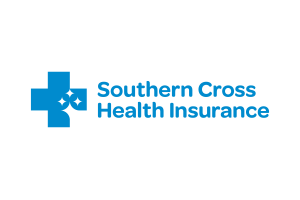Case Study
How NZ’s largest independent healthcare network found ‘real gold’ in PROMs and PREMs


With the PROMS and PREMS programme entering its 7th year Southern Cross has built up a real asset for delivering insights. We are also really encouraged to see the provider community embrace the patient voice with some facilities now asking for unblinded data to support their improvement programmes, says former senior executive Glenn Martin.
The initial impetus behind Southern Cross beefing up its PROMs and PREMs surveying was to develop a view of how members regarded the quality of the care delivered by providers contracted to Southern Cross. Because despite being a not-for-profit, the company’s head of provider outcomes and experience Glenn Martin says that ‘initial discussions with providers often came back to the perception we were only interested in cost and we just paid the bill’
But several years working with Cemplicity have added value to the business. ‘It’s helped us take the conversation away from the narrative that we just want to drive down price, because we’ve never been a pure financial services organisation. We’re a health and wellbeing organisation that happens to be an insurer’ – says Glenn Martin, former senior executive.
PROMS and PREMs – patient-reported outcome and experience measures – are of course an established part of today’s healthcare business and the number of companies providing such services has increased dramatically in the past decade.
But with over a decade’s experience in six countries, Cemplicity believes that collecting data is not the end in itself, but the starting point.
For Southern Cross, that has meant securing all the usual benefits that should come from working with a world-class healthcare-outcomes software company. Patient feedback is now collected more securely and efficiently. Clinicians get to see patient feedback and care-ratings ranked against other anonymised practitioners. And management gets an overview of the business that can inform strategic decision-making and value-based commissioning.
But the benefits have gone beyond that. Martin has seen the positive impact of consistently great patient feedback at hospitals and clinics. It has given the team a real lift for the patient care to be recognised. We have also seen providers reflect on the feedback where things haven’t gone to plan and have made changes to how the patient experience is managed. Patient satisfaction has gone up, with a 17% rise in customers saying they would refer others to Southern Cross (figures year-on-year to June 2020).
And Southern Cross has an important evidence-based discussion to have with prospective and existing providers that it’s driven by patient outcomes, not just costs. Because as Martin says: ‘Value is connected to good outcomes and those are connected to a patient’s need. We’re here to make sure that our members have good health experiences. That’s quite a big shift from being viewed as an efficient bill payer’.
How it Started
Southern Cross began working with Cemplicity in 2016. As New Zealand’s largest health insurer with 870,000 members, it holds a 62% share of the insurance market and pays out 73% of all claims country wide (In 2020, it even gave its members back $50m in premiums due to members not being able to use their insurance in the normal way throughout the nationwide lockdown). In a country that already has a comprehensive government health system, most of its reimbursement is connected to elective and secondary health care.
It was already developing a digital patient feedback system but there were limitations. Although all its providers asked the same questions, they used different software to capture responses which then had to be uploaded onto a central system. Results couldn’t be accessed in real time and the model wasn’t scalable.
Southern Cross came to Cemplicity because of its reputation both in competitive overseas markets and at home, where its projects with the New Zealand government had been growing for several years. The insurer was attracted by Cemplicity’s emphasis on client servicing and creating user-friendly software.
Southern Cross had two main objectives.
- To become more efficient at gathering and analysing patient feedback.
- To improve healthcare provision nationwide by sharing findings and best practice.
‘We’re a facilitator of insight for our providers,’ says Martin. ‘We’re in a unique position with an oversight across the full geography of New Zealand and all specialities. When you compare providers or specialities through that macro view, the data has a lot more richness to it.’
Cemplicity’s approach to client briefs has been fine-tuned over many years and projects. It gives each client a dedicated account manager, who is always there on the end of a phone and knows their business inside out.
Because the insurer supports such a wide range of providers, Southern Cross decided that using internationally recognised instruments such as The Oxford Outcome and Experience Questionnaire and the Euroqol quality of life survey, EQ-5D would give them the breadth they were looking for in its patient outcome measure. Many Cemplicity clients use ‘industry standard’ surveys such as EQ-5D or the Oxford Hip and Knee Scores as the basis for their systems, because it allows them to compare data with other providers internationally.
Cemplicity’s worked closely with Southern Cross’s data management team to integrate important data they already had about each member’s procedure with their invitation for feedback. Supporting a client’s IT department to implement a plan is very much Cemplicity’s way of working. It took just one month to get a new survey up and running and another three months to get the reporting system in place.
When it came to deciding what the reporting should look like, Southern Cross had its ideas in chart form and was keen to integrate its own data sources. But it was looking for advice on how to bring that to life for everyone using it.
‘The programmes we run aren’t IT programmes, they are quality improvement programmes that require IT input to be delivered.’ – says Blaik Wilson, Cemplicity CEO.
Cemplicity’s design team worked hard to understand the ‘user story’ around how Southern Cross would like to view changes in outcomes in a systematic way. Cemplicity designed a suite of charts that allows system-level assessment of changes in outcomes split across useful data points – for example, by facility, procedure type and providers themselves.
How it Works
Three different surveys are used. Southern Cross measures the experience associated with non-surgical consults after the consult has been delivered. For some more routine surgical procedures an outcome and experience questionnaire is sent after a reasonable recovery period. For more complex surgeries patients are asked to complete the a survey before their procedure, to establish a baseline health score and then after their procedure to plot their health journey; Each respondent is asked how successful their procedure has been and what they thought of the care they received. They’re tagged by individual clinician, procedure, hospital or clinics, up to regional level, though the data is ultimately anonymised. Invitations are sent out by email or SMS. The system is cloud-based and can be accessed by patients through any browser on tablets, laptops and smartphones. Whoever the provider is, the email will always come from Southern Cross, linking the patient with the ongoing care of the insurer.

Real-time
information
Customised dashboards
for different teams

Consistent
communications
A continuous stream of rich, real-time information gathers in the Cemplicity reporting portal and stays working quietly in the background until staff call it up. Cemplicity has developed different dashboards for different authorisation levels, so that everyone sees what’s directly relevant to them and nothing else.
Meeting the Two Main Objectives
The new survey programme has easily reached Southern Cross’s first objective. In the first year of using the new system, experience survey response went up by 62%. The database has 150,000 responses and a total of 200,000 member comments. Response rates are steady and above industry benchmarks. Some surveys like the 180-day recovery survey enjoy a steady 60% response rate over the past four years. This is good patient participation by international standards, but Southern Cross and Cemplicity still actively test ways to shift the response rate dial.
The second objective, dissemination of best practice, has evolved through many stages of sector consultation and as the rich data base has grown.
When a new provider comes online and has access to reported data for the first time, Southern Cross offers a trainer to help them learn from what others are doing better.
‘We find across our clients worldwide that 80% of feedback is usually positive, but human nature is such, that people often focus on the worst results when they first look at reports. That’s why we suggest support initially. It helps users find the lessons to be learned rather than feeling overwhelmed.’ – says Wilson.
Martin agrees: ‘If it’s their first time using these kinds of results as a self-reflective tool, that’s actually something that needs to be done with some support and context.
For frontline staff, the system encourages better practice by highlighting patients with potential problems on an ‘Action Register’, identified using a well-tested Cemplicity algorithm. This allows staff to note down actions on pages that act like a CRM system with space for notes, a referral system and ultimately a ‘resolved’ tick box.
For senior clinicians, better practice comes from studying their aggregated ratings for their speciality. They see themselves in a league table ranked next to the five highest and lowest-rated practitioners in their field, but they won’t see others’ names or where they work. Southern Cross understand the journey to transparency of data is complex and so the policy has been to build engagement and familiarity with personal data. ‘I think that openly reflective practice using patient feedback is actually quite a big step. A lot of specialists are quite protective of their own data and there’s a nervousness about that transparency,’ says Martin.
Nevertheless, it’s started to happen and is being driven by specialties themselves. For instance, a number of urologists have been sharing and exploring their non-aggregated data in more detail. Martin believes this is one of the most exciting aspects of soliciting patient feedback well. ‘It’s good to see a group of practitioners sit down and share their data and look at the variances between them. It’s an asset for them long term that will help evolve their own practice in terms of improving outcomes and experiences. And it will ultimately improve referrals to their clinics as well.’
Added Value
But while more efficient collection and analysis of data has supported the improvement of healthcare outcomes and experiences, other benefits are coming through.
The effect that the collaboration with Cemplicity has had on staff morale for providers, for example, is not something Southern Cross had expected. But in a year when Covid has brought to public attention the way healthcare staff are all too often overstretched and under-appreciated, positive patient feedback has never been more important.
‘So for example, when we’ve let providers know that their consistently high patient reported outcomes and experiences were being recognised it has given their staff a real lift to know their efforts are appreciated,’ – says Martin.
Positive patient journeys also provide Southern Cross’s provider partnerships team with a new way of illustrating what the relationship with them will be like. ‘A common objection with providers is that the conversation is dominated by cost’ says Martin, ‘but that’s actually not the case at all. Our partnership managers can show that by taking the data out and talking it through.’
The Future
Nearly five years on, and Southern Cross’s relationship with Cemplicity is still strengthening.
Developments include the introduction of the Doctors Interpersonal Skills Questionnaire in 2018, to help doctors uncover opportunities for improvement in communication skills, an factor often cited by patients as one of the most important aspects of their care journey. With the support of The Royal Australasian College of Surgeons, doctors are also able to gain Continuous Professional Development (CPD) points by actively engaging with and acting on patient feedback captured by Cemplicity and Southern Cross, saving them the effort of running a standalone feedback system within their clinics.
There’s also a greater emphasis on examining results by ethnicity, especially amongst Maori patients, to try and understand whether clinical outcomes are different than the average in New Zealand and how this can be changed.
But most exciting is the development of what Cemplicity calls ‘sentiment and theme analysis’. Each patient’s survey has the space for additional comments at the end and Cemplicity has noticed over the years that this is the place where unexpected discoveries are made. Or as its website says: “Numbers are one aspect, but patient stories are often where the real gold lies’. Encouraging patient comments bubbles nuggets of the good, the bad and the in between to the surface.
The company has developed a new tool that groups the main comments into their own data sets, such as ‘Food’, ‘Nurses’ or ‘Wait Times’. Digging down into the data in this way adds depth because the information from questions and comments don’t always match. A patient might rate overall hospital care as ‘good’ but add a comment that their discharge experience was poor. Sentiment and theme analysis makes these comments more than anecdotes: it gives them clout in the overall data. Southern Cross is one of the early adopters of this innovative tool.
What’s clear above all else is that capturing and analysing patient data supports development of a member centric organisation. It helps to humanise the business model and become even better at meeting our members’ needs.
The next challenge is to leverage the data further to support our members. ‘Think about someone calling up and being really scared because they’ve never had this particular surgery before, what can they expect?’ How can the data be utilised to build confidence and manage expectations. One thing is for certain – patient reported outcome and experience data is only going to become more important to us.

